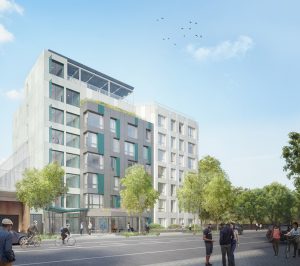
While the carbon impact of a building’s entire life cycle is critical, emissions averted by 2030 have an even more significant beneficial impact on our climate than those averted later. This is because emissions are cumulative, and we have a limited time to reduce them. The good work we do now may keep us from reaching an increase in global temperature that would trigger several climate tipping points. If we cannot achieve our 9- to 10-year emission reduction goals to keep the warming under 1.5°C, there will be severe and irreversible damage, including permafrost loss and diebacks of the Boreal forest, Amazon, and coral reefs (see Figure 1). Among other results, a large amount of stored carbon and methane will be released, making efforts to keep the planet habitable for its current populations that much more difficult. Now is the time to act.
Given this limited timeframe, a development’s embodied carbon (EC)—the emissions associated with material extraction, product manufacturing, transport, and construction—takes on an outsized importance. In fact, if we continue with business as usual, EC will make up almost half of the emissions associated with construction in the next 30 years. Indeed, for a new building built today, EC represents the majority of its impact in the critical next nine years. To optimally reduce the carbon emissions from a given project, we think it is imperative to holistically balance EC and operational carbon (OC), ensuring they are evaluated concurrently, rather than solving for one at the expense of the other—although sometimes that’s a tricky balance to achieve, because they can require conflicting strategies.
In our practices—Magnusson Architecture and Planning and Bright Power—we’ve had considerable experience and success in reducing our OC—specifically through applying Passive House building principles. Still, EC is too large a slice of the pie to ignore; just one commonly used building material, concrete, makes up roughly 8% of global carbon emissions. So, as an architect and sustainability consultant, we have been negotiating this delicate balance between EC and OC. In part one of this two-part article, we are laying out our framework for how we are addressing both EC and OC. In part two we will be showing how we apply this framework to a new affordable housing development, as an example. We will also explain how this approach can increase equity, especially in the urban affordable housing context. At Magnusson Architecture and Planning and Bright Power, we are interested in presenting ideas that teams can employ immediately, cost-effectively, and with minimal impact on their processes.
Read the full article on Passive House Accelerator’s website or in the Passive House Accelerator magazine.